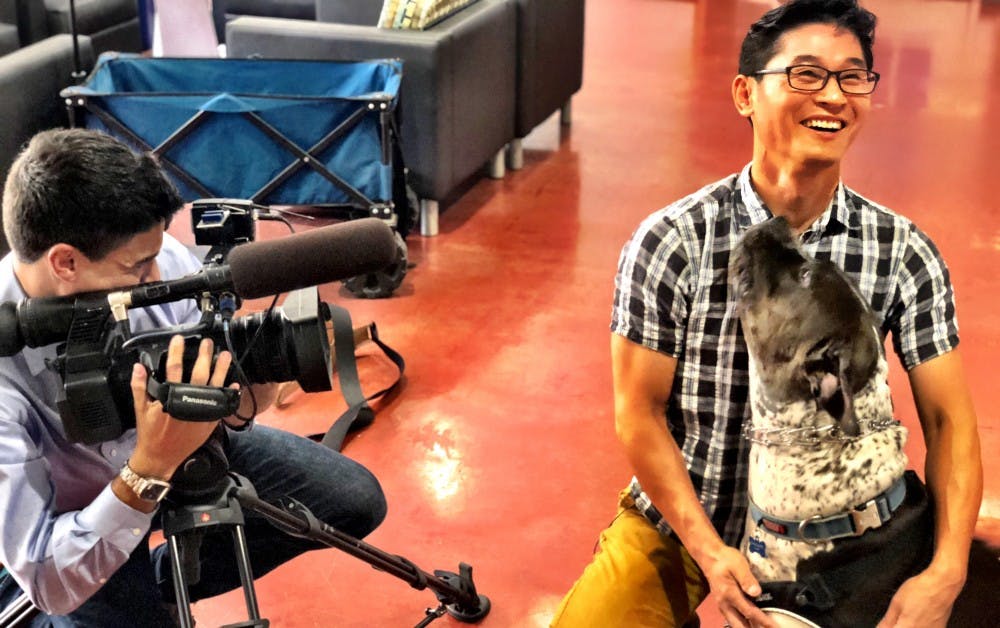The whirring of machines cuts through the air and students fill the hallways. With an industrial feel, the Herberger Institute for Design and the Arts has put forth many projects. A recent addition to that list is a prosthetic limb for Chuck, a dog who lost his leg.
Koco Garcia, the owner and operator of Handover Rover, found Chuck in California after he was taken from his previous owner, a homeless man.
Handover Rover, a dog rescue nonprofit, initially intended to get Chuck back to his owner. Those intentions soon changed after Garcia found out that the man was a heroin addict and used the dog as a shield against police officers, resulting in Chuck getting shot and his leg getting amputated.
Though Chuck has lived a hard life, Garcia said he is one of the best dogs that Handover Rover has ever seen. He is even used to help assimilate new additions to the shelter due to his well-rounded and caring nature with both people and other animals.
“Some of the dogs we see have behavioral issues, like one of our dogs, Dustin. He was tied up his whole life and because of that, had a bunch of energy and no social skills,” Garcia said.
The other dogs had not taken to Dustin due to his puppy-like nature but according to Garcia, Chuck helped teach Dustin the social skills he had been missing.
In need of a prosthetic leg for Chuck, members of Handover Rover reached out to the ASU Design School and were connected with Dosun Shin, a professor who specializes in industrial design.
According to Shin, design is a powerful force that can be life-changing but is often overlooked.
“In this case, design was able to bring two groups of people together in the community to accomplish one goal: to improve the mobility and life of a very special dog,” Shin said.
The project is three months along and is expected to be finished by November 2018. Though building prosthetics for people is not uncommon, animals pose a challenge because of their inability to communication.
“One key difference while performing measurements is dogs don’t understand what’s happening in the same way human subjects would understand, and he tends to move around while we attempt to make measurements,” Shin said.
Currently working on prototypes, Shin said the final design could either be a prosthetic or wheelchair type apparatus due to Chuck’s lack of bone structure above where the leg was amputated, which makes it difficult to secure the prosthetic safely.
Shin said that dog prosthetics are often expensive because they are highly customized to meet the size and needs of each dog.
According to Lynne Hoban, the owner of Friendship Pet Hospital and Wellness Center, the use of a prosthetic can vary depending on the animal.
"Even for people, getting a prosthetic is an adjustment," Hoban said. "It's the same for animals and sometimes you'll see some dogs trying to chew them off. I wouldn't recommend them if the animal is getting around fine but for big dogs, especially if they're missing a front limb, they can be a great help."
For Shin, providing Chuck with better mobility and heightened quality of life is invaluable.
"We believe rescued animals deserve all the same benefits and assistance that we can provide to them,” Shin said.
Reach the reporter at kreinha3@asu.edu and follow @ReinhartKatelyn on Twitter.
Like The State Press on Facebook and follow @statepress on Twitter.




